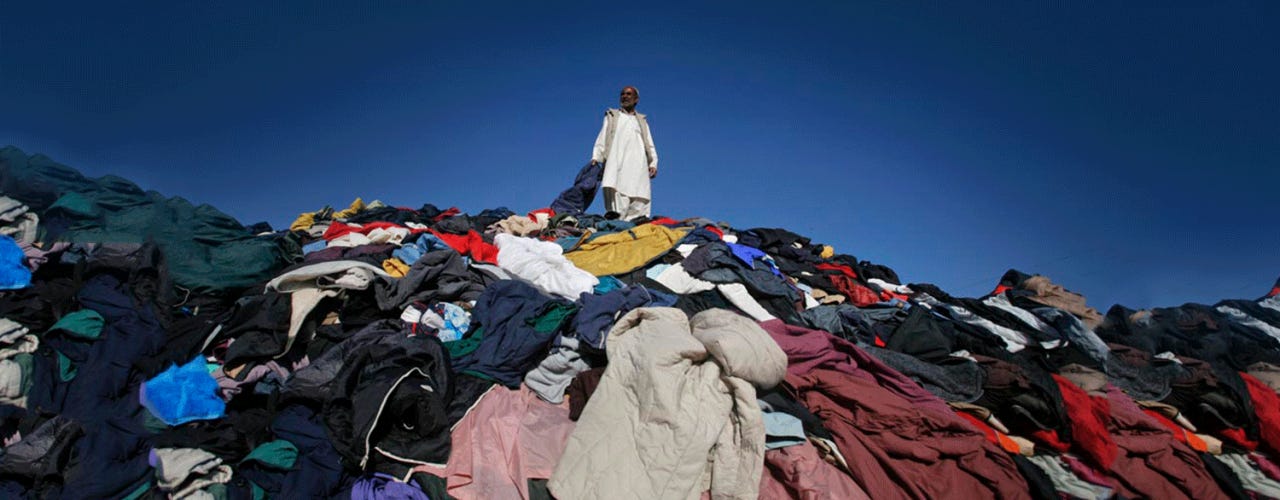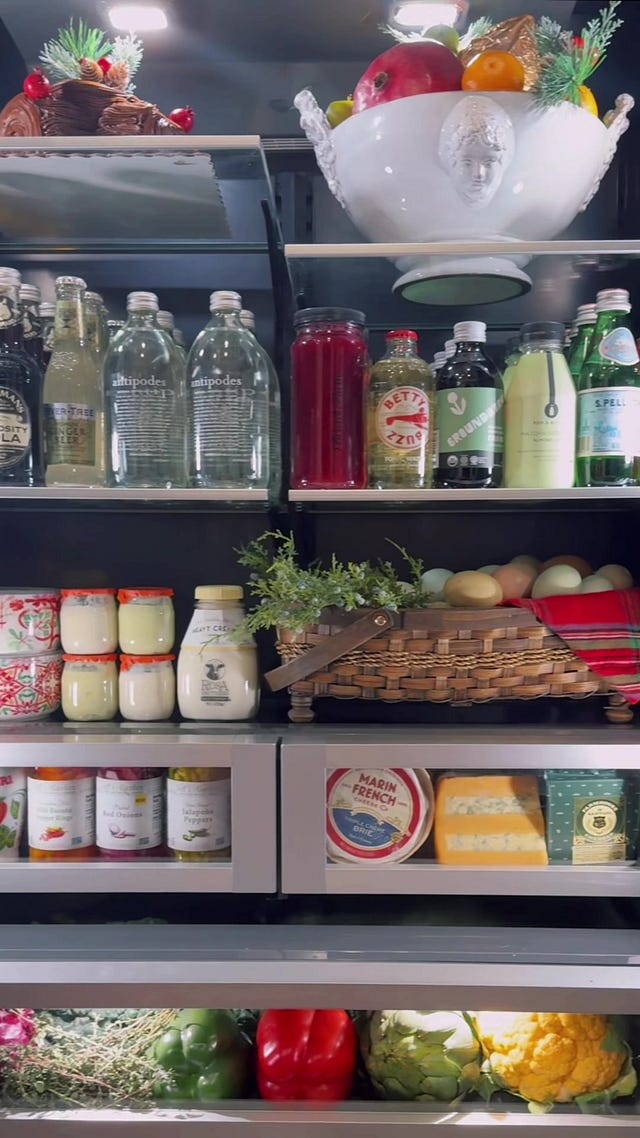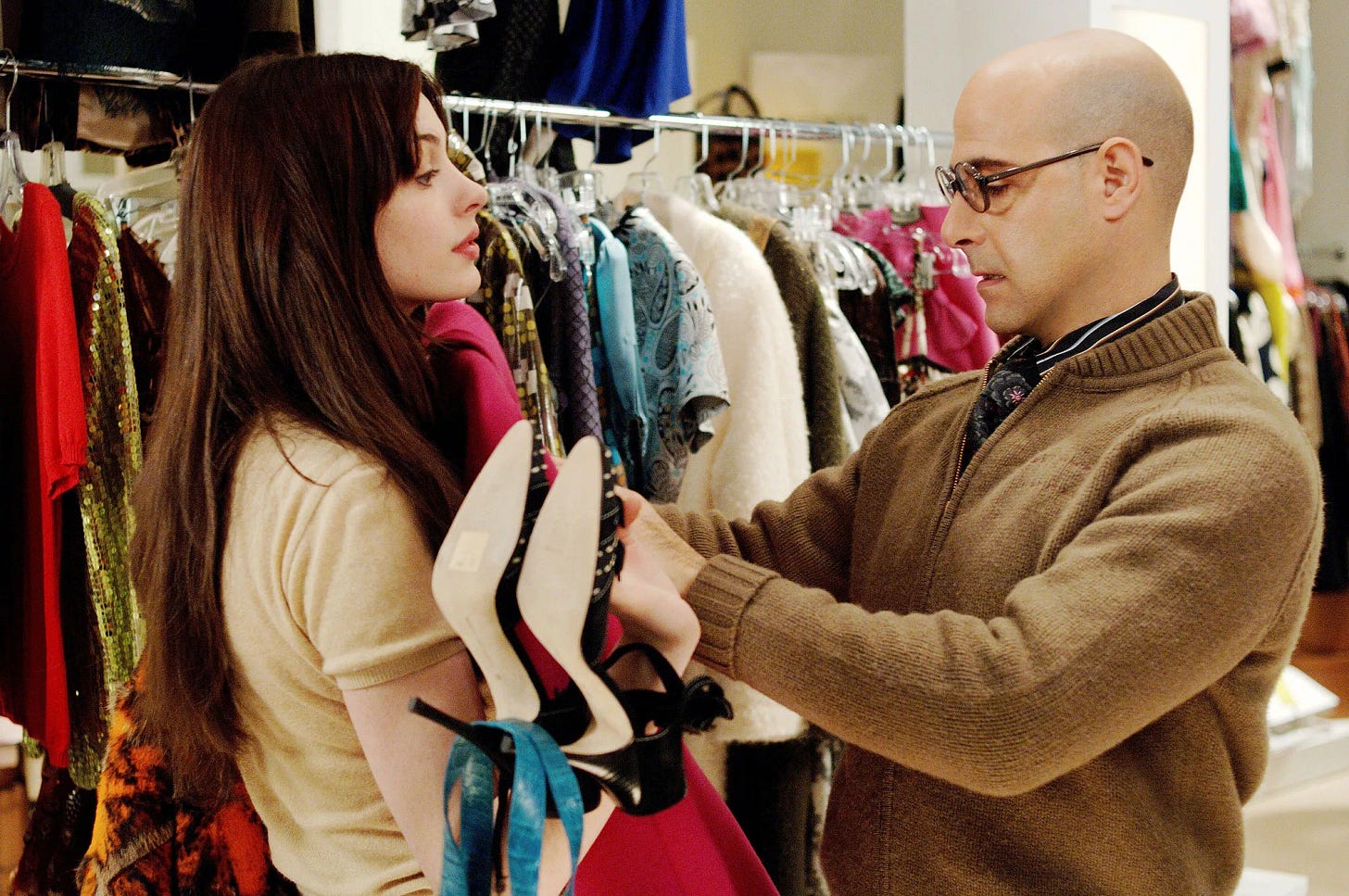Welcome to a new series on this Substack, the Eco-Entries, where I talk about eco-minimalism as a construct and a driver for change. Eco-minimalism is a term that first originated in architecture, an approach coined by architect Howard Liddell and sustainable water management consultant Nick Grant.1 The tenet of this concept is to avoid use of excess, unnecessary, and ostentatious eco-technology, but rather to improve sustaianbility in construction. The purpose of eco-minimalism in this context is to minimize environmental impact, while maximizing human well-being and economic benefit.
I first came across this term while watching Shelbizleee on YouTube. She coined herself as an “eco-minimalist”, and I was somehow convinced that she created this term by mashing two words together. It’s quite clever if you think about it, finding yourself at the intersection of two lifestyles that have, at times, stark differences, but can mutually benefit each other in many ways. I first started off as a minimalist, and slowly found ways to integrate sustainable practices to my lifestyle. I think I’m better at being a minimalist than incorporating sustainability, but it’s a learning process!
Posts in this series will be more research oriented than some of my others. I will be taking more time and energy to review the existing literature and condensing them in this newsletter—as always, references are denoted with a footnote, which you can view at the bottom of each newsletter. I highly recommend taking a look at a few if any interest you.
Let’s get into the bulk of this newsletter—here are some lessons I’ve learned along the way.
lesson 1: buying in bulk for two mouths to feed is a bad idea
I grew up going to Costco on the weekends and seeing my parents stockpile fruits, vegetables, milk, toilet paper — the whole gamut of it all. When I moved into my own apartment (without roommates for the first time!) in Boston, I subconsciously did the same; I purchased bulk onions because they were slightly cheaper than buying them individually, got the largest sack of rice for me to not even be able to finish it all by the time I moved out, just to find myself shocked when I found red bell peppers rotting in the bottom of my vegetable drawer. I remember watching “What’s In My Fridge” videos on YouTube (a very niche topic, but I swear they’re addicting) and thinking to myself—how could these people survive off of so little? That many Ollipops with so little food?
 Tiktok failed to load.
Tiktok failed to load.Enable 3rd party cookies or use another browser
Throughout my childhood, I’ve seen my family’s fridge consistently packed with food. Once there was any semblance of space to fill, my parents went to Costco and it was filled right back up to the brim. To clarify, they weren’t hoarding food, because my parents also finished up at least 95% of the food before the expiration date. I rarely saw items getting thrown out due to mold. Bad taste, maybe.
I later realized that this was happening because I myself ate a good amount of food every day, especially as a high school athlete. Varsity tennis was the most competitive sport at my school, so after school practices were long and exhausting. If I didn’t eat enough, I’d put myself at risk of collapsing on the court.
I stopped playing tennis after I graduated from high school, and never picked up a new sport or something remotely athletic afterwards, which was why living in Boston and grocery shopping for myself was a learning curve. Over time, I learned that buying food in bulk is only worth it if you have multiple mouths to feed. The difference in amount of produce that needs to be purchased to feed one mouth versus two is pretty drastic, and now that Mr. Beans is able to snag dinner from work, I can slim down my grocery budget (if I choose to cook most of my meals) because I hate wasting food.
That brings us to the concept of food waste, in which many studies have found it to be a significant contributor of greenhouse gas emissions2, substantially imposing stress on Earth’s climate systems.3 The reason being, food waste undergoes anaerobic breakdown in landfills and produces methane, a significant contributor to climate change due to its global warming potential.4 When food is discarded, the processes prior to having the item in your household is taken into account—production, manufacturing, transportation, preparation, and storage—which are all ultimately wasted. The manufacturing, transportation, and processing stages release a signfiicant amount of carbon dioxide, and when food lands in landfills, it emits methane. Other environment footprints of food waste include excessive water usage5, degradation of soil6, and poses a threat to species that are almost extinct7.
With that being said, I no longer buy food in bulk, because even though I have this miraculous ability to think that I’m able to finish a cabbage, 4 bell peppers, a head of kale, and 2 carrots before it gets moldy. It usually gets moldy without fail. Now, I buy based on what I’ll consume in a week, which is usually a box of tofu, 1 cabbage, and 2 heads of broccoli. And of course, a 50 pound bag of rice to last me at least a year.
It’s been a while since I’ve thrown out produce (at least purchased by me, since Mr. Beans has yet to find the perfect balance and tends to over-buy groceries). Not only does it help me see every single thing in my fridge with clarity, but it 1) helps me save money by buying what I’ll actually eat, and 2) avoid methane production as a result of food waste.
lesson 2: most furniture can be purchased secondhand

When I moved into my apartment in Boston, I purchased everything very cheaply and new from Amazon. I ended up leaving behind all the furniture items behind for my subletter to use, since there was no point in taking home furniture that was already showing signs of deterioration in less than a year. When I moved into my current apartment in SoCal with Mr. Beans, we made a grave mistake of purchasing all our items new, once again, but “high quality”. It was like I didn’t learn my lesson first time around, but instead, convinced myself that I could “invest” in pieces that would last a long time.
Our $3,000 Room & Board purchase was replaced once as a result of a fabric tear, and ultimately returned after we noticed another tear. In the video, why is furniture all the same now, Mina highlights a lot of problems in the furniture industry, and why expensive furniture pieces might not actually be as high quality as the brand claims it to be. I personally believe that unless someone is so wealthy where spending $10K-$20K doesn’t mean much to them, then sure, finding the highest quality furniture pieces that will last forever is feasible. I would even go so far as to say finding an expert craftsman to create custom pieces for the home with that type of budget. However, for most people, it’s not. After years of avoiding Marketplace because my parents told me that resell sites were “gross”, I realized that this is the place to go for good quality furniture at great prices.
I also used to be hesitant to purchase secondhand items because there was practically no return policy. However, that excuse caused me to spend upwards of $10,000 on new furniture, while at the same time, hating at least 50% of those items (in which 25% of them are now sold at a fraction of the price I paid).
Our last “new” piece was our sofa, which we struggled with because we wanted to buy one secondhand but it would have been a lot of effort to sanitize it thoroughly and haul it upstairs. I’m still in the process of navigating purchasing secondhand items that have some sort of cushion or filling—one that is difficult to wash ourselves.
lesson 3: there is a fine line between decluttering and donating

A few years ago, YouTube was swept by “declutter with me” videos. They were addicting for me, and if anything, encouraged me to declutter items on my own. However, the one thing these YouTubers did not highlight was how terrible donating to big nonprofits or corporations actually is.
I’m sure that nonprofit donation-based organizations started out with good intent, but malpractice is everywhere, especially when financial greed is involved. It is a double-edged sword though; there are way too many people who donate trash to these donation centers, and it does take a lot of effort and energy to sort through piles and piles of rubbish to find gold. At the same time, the “good” items get taken by the employees (as they are the ones who see it first), or auctioned off for a steep profit.
I’m not one to give advice for this tip because I currently own very minimal things. Nowadays, if I want to get rid of something, I list it on a secondhand site, then store it away in my wardrobe until it sells. I don’t rush to sell because I do have storage space for it. However, when I first discovered minimalism, I couldn’t bear seeing items tucked away, waiting to be sold. I wanted it all gone in an instant. Here is what I would do differently, instead of throwing everything into trash bags and dumping them into Goodwill bins.
Divide all my items into 1) so terribly broken no one would ever buy it, 2) items in good condition but good luck with reselling it because it’ll take a long time for someone to purchase it, 3) items that are highly likely to sell, 4) items I haven’t worn because it needs fixing, and 5) must-keep items without a doubt.
For the items in the first category, I would use them as stuffing for pillows or cushions. I’m terrible with taking existing fabric and making it into something beautiful (e.g., Suay Sew Shop, Psychic Outlaw), but that’s not me. In another universe, the seamstress version of me would absolutely upcycle them into new pieces using sewing patterns online.
For items in the second category, I would post them on my Buy Nothing page on Facebook. From memory, these would be items I wore throughout middle and high school, are not timeless because I used to love neon colors and logos, and clearly don’t fit me anymore. Someone’s child could benefit from these clothes since the style, not the fit, is the problem.
For items in the third category, I would set aside a day or two to list all these items on Ebay or Marketplace. Truthfully, selling anything online is a pain, because you have to take a picture of it, upload it onto the platform, write a whole description for it, add details (find the item description from the company’s website if it exists), and figure out how much you want to sell it for.
For items in the fourth category, I would ask my parents if it’s possible for her to mend these. If not, I’d go to a tailor and get a quote to see how much it would cost. If it is a relatively reasonable price, then I’ll move forward with getting it mended by the tailor. If it is out-of-budget, revert to #3 or #4.
For items in the fifth category, there’s not much to do besides keep them, adhere to proper washing instructions, and cherish them!
lesson 4: there are too many clothes in this world for me to be buying it new
The fashion economy has historically operated linearly, where huge amounts of resources are extracted, transformed into clothing that are used a few times by the consumer, and afterwards, thrown away in landfills or incinerated, creating waste.8 Among the clothes produced in a year, only 60% get sold, while 40% are unsold, discarded to landfills, or incinerated to protect brands’ price integrity or prevent production of counterfeit products (e.g., Louis Vuitton and their bag controversy).9 Less than 1% of the materials used to make these products are recycled into new clothes or other products.10 This approach to a linear economy is not only destructive for the environment, also causes substantial economic losses, putting human welfare and livehoods at risk.11 With a linear economy as the “norm” for the past few decades, consumers still acquire new clothing items weekly12 and throw away used or unwanted clothes after a few uses.13 Over-consumption, under-utilization, and disaposal behaviors are part of the problem that has been causing deterioration on our environment (over-production of textile waste), the economy (fluctuating textile prices due to material demand), and society (harming well-being).
With that being said, there is no need to purchase anything made from new textiles at this point. I can excuse purchasing a new item made from recycled, deadstock, or thrifted textiles, as those fabrics are much less resource intensive to create. However, I still prefer using LuckySweater to trade pieces with other folks (the best community) or purchasing secondhand at thrit shops or online secondhand sites.
lesson 5: lifestyle inflation is no joke

I grew up being convinced that my family was living paycheck to paycheck. My parents would refuse to buy new clothes for me unless they were at least 50% off. At the time, Hollister and Abercrombie & Fitch branded t-shirts were all the hype. If you had that logo splashed across your chest, then you were “cool”. Because my parents only purchased items on sale, I’d have a smattering of colorful prints in my wardrobe, because the basic colors never went on sale. Over time, I learned that even though my parents refused to let me buy, what I now call “non-essentials” recklessly, we always had food on the table, a roof over our heads, and our family, including အဖွား (grandparents) were always taken care of; wealth was being utilized in other ways that I was unable to comprehend, by paying off my tuition without needing to ever take loans, investing in multiple real-estate properties, and hiring full-time caretakers for my grandmas. My parents are a wonderful example of combatting lifestyle inflation.
I, on the other hand, did not understand this concept until I found myself using every paycheck during undergrad on expensive snacks at Whole Foods and a new clothing item from Lululemon or Anthropologie. I was in a constant state of: “What could I upgrade in my life?”, instead of acknowledging that the items I currently owned still have years of life left in them. Lifestyle inflation is a core tenet of anti-eco-minimalism, or rather, excessive consumerism. Around 5 years ago, when I embarked on a rather intense and wasteful minimalism journey, I would get rid of an item to replace it with something new (reminiscent of minimalism, the one-in-one-out rule), donate the “old” item to Goodwill or Salvation Army, or even at times, throw it out because it was the easiest thing to do. All of these being the antithesis of sustainability, and where a lot of people go wrong when they try out minimalism for a month or so.
At this point in time, if I want to sell something, I do it primarily for the sake of culling the items I own and making extra cash, rather than as an attempt to replace it with something new. I take a long time to decide if I need something “new” (new in my life, but still secondhand), and make sure to reflect this back to my budget to see if I’m able to fit it in. If not, I could live without it.
I’m excited for this series, as I am very passionate about eco-minimalism. I personally believe it’s a movement that is rooted in evidence-based science, and can create systemic change if more people take part in it. The intersection of minimalism and sustainability exists—we just need to come together for it.
Until next time,
—Beans
Knights P, Littlewood D, Firth D. Eco-Minimalism as a Virtue. Enviornmental Ethics. 2011;22(4):339-356. http:/doi.org/10.5840/enviroethics201133441
Varjani S, Vyas S, Su J, Siddiqui MA, Qin ZH, Miao Y, Liu Z, Ethiraj S, Mou JH, Lin CSK. Nexus of food waste and climate change framework: Unravelling the links between impacts, projections, and emissions. Environ Pollut. 2024;344:123387. https://doi.org/10.1016/j.envpol.2024.123387
Khan I. Waste to biogas through anaerobic digestion: Hydrogen production potential in the developing world - A case of Bangladesh. Int. J. Hydrogen Energy. 2020;45(32):15951-15962. https://doi.org/10.1016/j.ijhydene.2020.04.038
Diacono M, Persiani A, Testani E, Montemurro F, Ciaccia, C. Recycling Agricultural Wastes and By-products in Organic Farming: Biofertilizer Production, Yield Performance and Carbon Footprint Analysis. Sustainability. 2019. https://doi.org/10.3390/SU11143824
Das R, Shaw K, Irfan M. Supply chain network design considering carbon footprint, water footprint, supplier’s social risk, solid waste, and service level under the uncertain condition. Clean Techn Environ Policy. 2020;22:337–370. https://doi.org/10.1007/s10098-019-01785-y
Nag R, Whyte P, Markey BK, O’Flaherty V, Bolton D, Fenton O, Richards KG, Cummins E. Ranking hazards pertaining to human health concerns from land application of anaerobic digestate. Sci. Total Environ. 2020;710:136297. https://doi.org/10.1016/j.scitotenv.2019.136297
Gholami Z, Mortazavi MS, Karbassi A. Environmental risk assessment of harmful algal blooms case study: Persian Gulf and Oman Sea located at Hormozgan Province, Iran. HERA. 2019;25:271–296. https://doi.org/10.1080/10807039.2018.1501660
Lieder M, Rashid A. Towards circular economy implementation: A comprehensive review in context of manufacturing industry. Journal of Cleaner Production. 2016;115:36–51. https://doi.org/10.1016/j.jclepro.2015.12.042
Danigelis A. Retailers bank on environmentally-friendly clothing for increased sales. Environmental Leader. 2017. https://www.environmentalleader.com/2017/07/retailers-bank-environmentally-friendly-clothing-increased-sales/
A new textiles economy: Redesigning fashion’s future. Ellen MacArthur Foundation. 2017. https://www.ellenmacarthurfoundation.org/assets/downloads/A-New-Textiles-Economy_Full-Report_Updated_1-12-17.pdf
Gam HJ, Banning J. Addressing sustainable apparel design challenges with problem-based learning. CTRJ. 2011;29(3):202–215. https://doi.org/10.1177/0887302X11414874
Kwon TA, Choo HJ, Kim YK. Why do we feel bored with our clothing and where does it end up? J. Consum. Stud. 2020;44(1), 1–13. https://doi.org/10.1111/ijcs.12540
Ruppert-Stroescu M, LeHew ML, Connell KYH, Armstrong CM. Creativity and sustainable fashion apparel consumption: The fashion detox. CTRJ. 2015;33:167–182. https://doi.org/10.1177/0887302X15579990










I loved this, thank you for sharing and putting all these guiding principles in one place =)